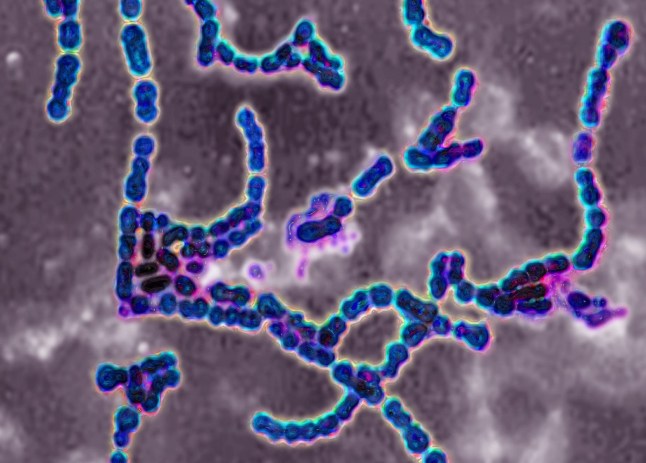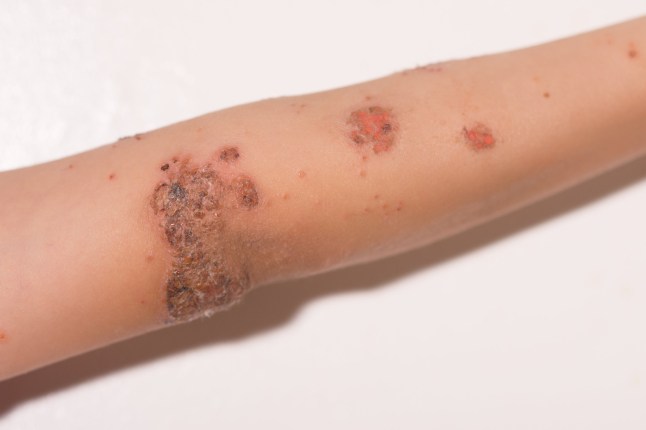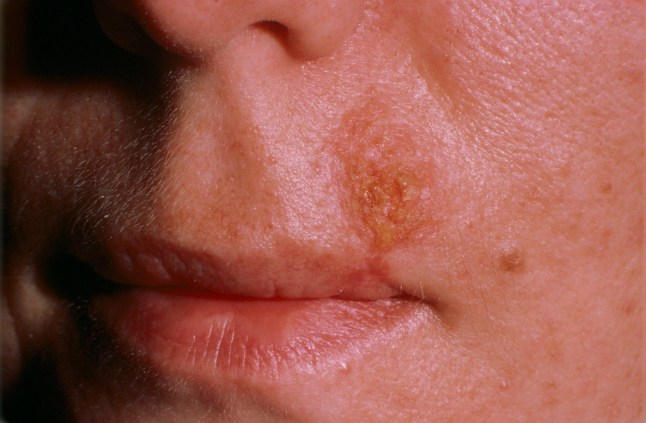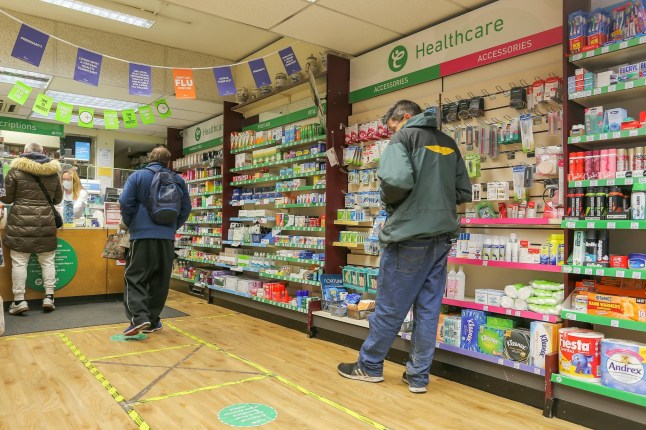
A rare ‘flesh-eating’ bacterial infection with a 30% chance of death is spreading at a record rate in Japan.
Streptococcal A bacteria is best known for causing strep throat in children, but a more severe form of the bacteria is causing concern as it spreads.
Japan saw record levels of the deadliest form of streptococcus last year, with 941 confirmed cases of streptococcal toxic shock syndrome (STSS).
But infections are now expected to surpass that record after 378 cases were recorded in the first two months of 2024, affecting all but two of Japan’s 47 prefectures.

There’s usually an average of less than 200 cases of this most severe form of group A streptococcal disease each year, Japan Times reported.
And fears are growing because experts admit don’t know what is causing the rise in infections.
‘There are still many unknown factors regarding forms of streptococcus with a severe and sudden onset,’ a National Institute of Infectious Diseases (NIID) spokesperson said.
‘We are not at the stage where we can explain them.’

What is Strep A?
Strep A is a bacteria that lives and grows in the throat, on the skin, and in the anus and genitals, according to the UK Health Security Agency (UKHSA).
Group A streptococcus causes a range of diseases affecting the skin, soft tissue and respiratory system depending on the strain of bacteria involved.
This includes tonsillitis, pharyngitis, scarlet fever, impetigo, erysipelas, cellulitis and pneumonia.
Repeated strep A infections can cause autoimmune damage to the heart, known as rheumatic heart disease.
This condition affects roughly 50 million people around the world, most of whom live in low and middle income countries.
Severe cases of strep A kill roughly half a million people each year.

How do you catch Strep A?
Strep A spreads through close contact between people.
How this occurs depends on where in the body the streptococcal bacteria has colonised.
It can spread through particles released from the body when an infected person breathes, or through skin-to-skin contact, the UKHSA said.
Strep A can also be spread through contact with contaminated objects like towels, bedsheets or food prepared by an infected person.
What are the symptoms of Strep A?
The symptoms of Strep A vary depending on the strain and disease it causes, but they can include:
- severe muscle aches
- nausea
- vomiting
- high temperature
- swollen glands
- sore throat (strep throat or tonsillitis)
- scabs and sores (impetigo)
- pain and swelling (cellulitis)
- rash (scarlet fever)
- red, swollen tongue (scarlet fever)
- flushed cheeks (scarlet fever)
What is Streptococcal Toxic Shock Syndrome (STSS)?
Occasionally, invasive strep A infections are so severe they progress to streptococcal toxic shock syndrome.
It comes with fever, chills, muscle pain, nausea, and vomiting, according to the USA’s Centre for Disease Control.
Severe cases quickly progress to sepsis, organ failure and even necrosis, which gives STSS its ‘flesh-eating’ reputation.
Roughly 30% of cases are fatal, The Guardian reported.
‘It is rare when it becomes severe like this’, Shiranee Sriskandan, professor of infectious diseases at Imperial College London, told Metro.co.uk.
‘I would say about 20% to 30% of our invasive Group A Strep in the UK might progress to STSS.’
Why is STSS surging in Japan?
The exact cause of the recent rise in cases of STSS in Japan is unclear, but ‘there’s no doubt that something has happened in Japan’, Prof Sriskandan said.
‘It’s made people sit up and notice.’
She suggests Japan is currently going through a post-Covid rise in illness like the UK experienced in December 2022.
At least 30 children had died from scarlet fever or invasive Strep A in the UK by the end of that month after a surge in cases since September, the BBC reported.
More than 400 people had died in total, according to the UKHSA.
The last of the UK’s covid-19 restrictions had been lifted earlier in 2022, unleashing a surge in various viral and bacterial infections that had seen rates plummet from March 2020.

Several cohorts of school children had had no exposure or immunity to strep A until they went to school that autumn.
But Japan kept many of its pandemic rules until the middle of last year.
‘They’re probably seeing what we saw in winter 2022’, Prof Sriskandan said. ‘They did have a rise last year as well, so it was beginning to happen the moment they relaxed restrictions.’
It may also be that the strains of strep A currently spreading in Japan may be particularly infectious forms causing severe disease.
Other infections circulating at the same time can make symptoms worse.
How do you treat strep A and STSS?
Most Strep A infections can be treated with antibiotics like penicillin.
But some people have blood pressure so low they can’t be safely medicated with antibiotics, so their condition may become more severe.
Severe and invasive forms of Strep A, and STSS, require hospital care, often in intensive care units.

Can you prevent a Strep A infection?
Methods for stopping the spread of Strep A are much the same as for other bacteria, and viruses like covid-19.
Dr Colin Brown, Incident Director at UKHSA, said: ‘Wash your hands regularly and thoroughly, catch coughs and sneezes in a tissue, and keep your home well ventilated.
‘If you are unwell with any infection, you should avoid visiting vulnerable people, and stay away from school, nursery or work if you are unwell with a fever.’
Could Strep A cause the next pandemic?
With millions of infections and half a million deaths from severe cases each year, Strep A has a major impact around the world.
‘It does it silently, but it has spread. We’ve seen new strains that have emerged’, Prof Sriskandan said.
‘But they don’t spread like viruses within a week.’
In fact, it takes so long for such bacteria to spread that it may be months or years before anyone notices the disease caused by it.
She added: ‘These bacteria do have pandemic potential, but the word pandemic means different things to different people.
More Trending
‘Most people think that means something has spread super quickly.
‘In the end, it just takes one person to bring a bug from one country to another.’
Is it safe to travel to Japan amid a surge in STSS?
The rate of STSS infections in Japan is still low, so the likelihood of catching it remains low, even if it is at historic levels.
The Foreign Office’s website makes no mention of STSS or concerns about strep A on its advice website for travel to Japan.
Get in touch with our news team by emailing us at webnews@metro.co.uk.
For more stories like this, check our news page.
MORE: A hatred of cash, post-covid blues and space dinners
MORE: The Metro daily cartoon by Guy Venables
MORE: What is pancreatic cancer and why is it so hard to treat?












